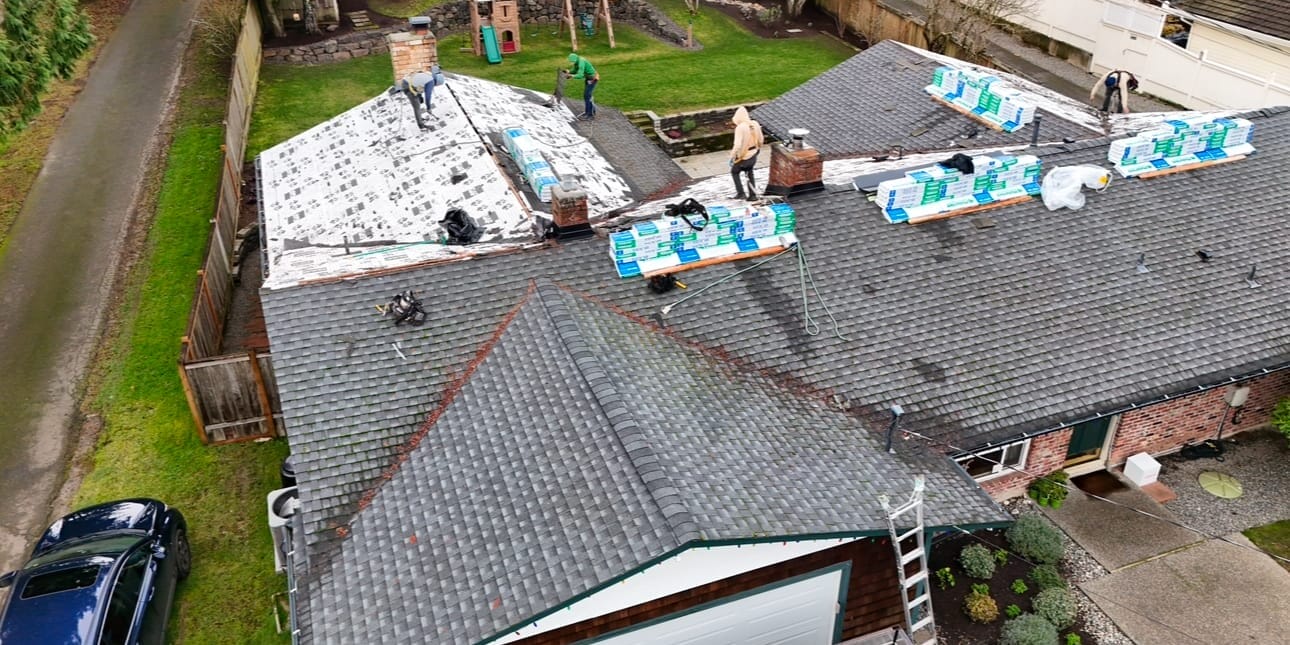How a New Roof Can Help You Save on Energy Costs
By K Single Corp Roofing & General Contractor
Upgrading your roof can be a headache of a project, so much so that many homeowners put it off and off until. However, it is actually a decision that could significantly impact your wallet in the long run.
The situation: many homeowners put off investing in roof replacement or repair, thinking they’re saving money. However, what often gets overlooked is how an old, inefficient roof can quietly drain your bank account with higher energy bills.
If your current roof isn’t in top shape, chances are your HVAC system has been working overtime to maintain comfortable temperatures. The result? A spike in your monthly utility bills.
So, investing in a new roofing system can actually be a great investment. Here’s a breakdown of how a new roof can help you save on energy costs, starting with why your roof plays such a crucial role in your home’s energy performance.
How Does Your Roof Affect Energy and Utility Costs?
Your roof is not just the protective umbrella over your house—it’s a critical component in regulating indoor temperatures. Here’s how your roof impacts your energy costs on a daily basis:
- Temperature Regulation: A poorly insulated roof allows heat to escape during the winter and seep in during the summer. This makes it much harder for your HVAC system to do its job effectively.
- Heat Reflection or Absorption: The surface of your roof plays a significant role in determining how much sunlight it reflects or absorbs. A roof that absorbs too much heat causes your home to feel warmer, putting extra strain on your air conditioner.
- Sealing Your Home: A well-installed roof seals the house, preventing drafts or outdoor air from sneaking in through gaps, cracks, or holes. Any breach in your roofing system can allow outdoor temperatures to creep inside, driving up energy usage.
Simply put, your roof acts as the first line of defense when it comes to your home’s energy efficiency and how hard your HVAC systems work.

The Disadvantages of an Old Roof When it Comes to Energy Efficiency
One of the main contributors to higher energy costs is an aging or worn-out roof. Over time, string, durable roofing systems deteriorate, losing their ability to perform effectively. Here’s why old roofs often fail the energy test and wind up costing you more money than they should.
- Lack of Insulation: Older roofs often don’t have adequate insulation due to outdated building codes or materials that degrade over time. This leads to energy loss as temperatures are harder to keep consistent.
- Leaks and Gaps: Worn-out roofs are more prone to cracks, broken shingles, or missing pieces. This creates spaces where air can flow in and out, affecting your home’s ability to maintain its desired indoor temperature.
- Outdated Materials: Roofing technologies have evolved significantly over the last few decades. Older materials typically lack the energy-efficient properties of modern options, leaving your home less protected from temperature changes.
Holding on to an outdated roof may seem like a cost-saving measure at first glance, but the long-term implications for your energy bills tell a much different story.

5 Ways a New Roof Can Help Cut Energy Costs
Here are five ways replacing your roof can help cut those energy costs down.
1. Solar Reflection
Many modern metal roofing systems come with reflective properties that deflect sunlight away from your home. Known as “cool roofs,” these energy-efficient options prevent heat absorption and keep your home cooler during warm months. By reducing the amount of transferred heat, your air conditioner doesn’t have to work as hard, lowering your energy consumption.
2. Improved Roof Ventilation
A new roof means improved roofing ventilation systems, which are crucial for regulating indoor temperatures and controlling moisture levels. Proper ventilation helps hot air escape from your attic during summer while retaining warmth in the winter. This reduces the energy demands placed on your heating and cooling systems.
3. Energy Star Rating
Many energy-efficient roofing materials now come with an Energy Star rating. These materials are designed specifically to reduce heat absorption, minimize energy use, and lower cooling costs. When shopping for a new roof, look for options with an Energy Star certification to ensure you’re optimizing every dollar spent.
4. Roofing Materials and Color Choices
The materials and color of your roof can have a direct impact on your energy efficiency. For instance, lighter colors, like white, light gray, or beige, reflect more sunlight than dark colors, helping to reduce heat buildup inside the house during the summer months. Sometimes, metal roofs are also coated with reflective paint, which is great for reflecting sunlight.
5. Better Insulation
Roof replacements often include updated insulation installation, ensuring no drafts or leaks compromise your home’s energy efficiency. High-quality insulation materials seal your home more effectively, keeping the outdoor elements in check and stabilizing your indoor climate.
April 21, 2025
How Much Does Roof Replacement Cost?
Will Replacing My Roof Help Me Save on Energy Costs in the Long Run?
Simply put, yes, it will! While replacing a roof can be a hefty upfront expense, it quickly pays off by reducing your monthly energy costs. This is something to consider when looking at initial investments and ongoing expenses.
At K Single Corp, we specialize in helping homeowners make smart, energy-efficient roofing upgrades tailored to their specific needs. Our expert roofing consultants are here to guide you in selecting the best materials, colors, and ventilation systems to maximize your savings.
Don’t settle for an aging roof that drains your resources—invest in a top-notch system that pays for itself over time. Contact us today to get a FREE estimate!

